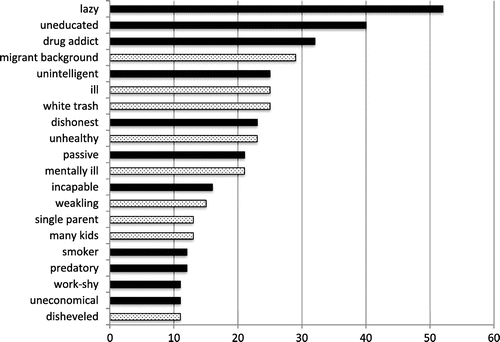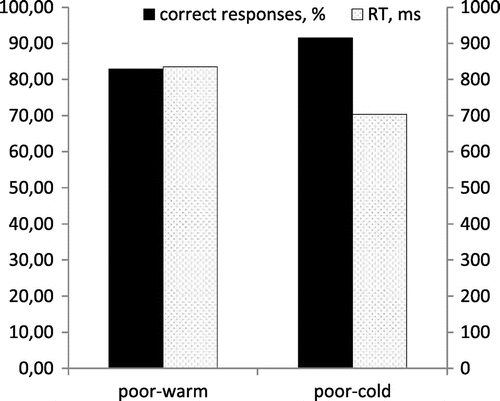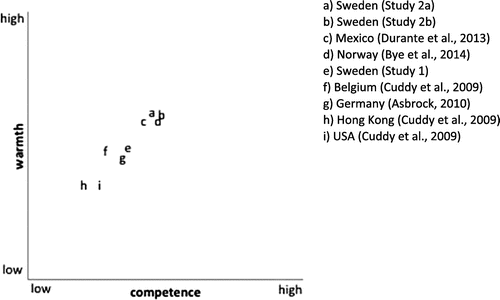Figures & data
Figure 1. The frequency distribution of the 20 categories with ≧ 10 words from the free association on the concept “Swedish citizens receiving welfare benefits.” Categories related to warmth/competence have solid black bars.

Figure 2. Results from the Single Category Association Test. Primary axis shows correct responses in % (black bars), secondary axis shows response time in ms (patterned bars). X-axis indicates if the category “poor” was associated with “warm” or “cold.”



